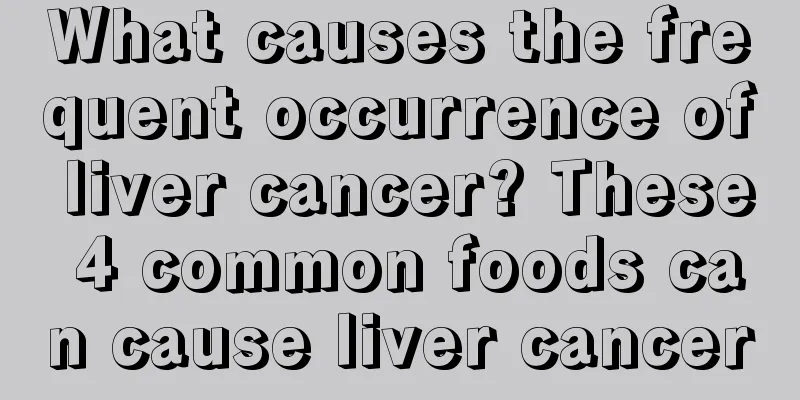A brief discussion on the late stage symptoms of gallbladder cancer

|
According to the survey, the incidence and mortality of gallbladder cancer ranks first among malignant tumors of the gallbladder. Others include giant cell adenocarcinoma, primary malignant melanoma, carcinoid, sarcoma, etc. The latter are rare and were considered to be relatively rare malignant tumors in the past. Regardless of the treatment method used, gallbladder cancer still progresses rapidly and eventually leads to death. The number of female patients is 2 to 4 times higher than that of male patients. It is generally more common in people aged 50 to 70. Early diagnosis and appropriate treatment methods are of great significance to the prognosis of this disease. 1. Symptoms of advanced gallbladder cancer 1. Pain in the right upper abdomen Most cases are persistent pain in the right upper abdomen, which may be aggravated paroxysmically and radiate to the right shoulder and waist and back. This symptom accounts for 84%. Since gallbladder cancer often coexists with gallbladder stones and inflammation, the pain is similar to that of calculous cholecystitis, starting with discomfort in the right upper abdomen, followed by persistent dull pain or dull pain, sometimes accompanied by paroxysmal severe pain and radiating to the right shoulder. 2. Digestive tract symptoms The vast majority (90%) experience indigestion, aversion to greasy food, belching, and decreased appetite, which is due to the gallbladder's inability to digest fat. Nausea and vomiting are also quite common, and there is often a loss of appetite. 3. Jaundice Due to the spread of cancer, about 1/3 to 1/2 of patients develop jaundice. Jaundice is the first symptom in a few patients, and most jaundice occurs after pain. Jaundice is persistent and progressively worsens. A few patients show intermittent jaundice. Jaundice often appears in the late stage of the disease, accounting for 36.5%, mostly due to cancer tissue invading the bile duct and causing malignant obstruction. It is also accompanied by weight loss, fatigue, and even cachexia, yellowing of the skin and mucous membranes, and difficult-to-treat skin itching. 4. Chills and fever It often occurs in the late stage of cancer. 25.9% of patients develop fever, and the high fever may persist. 5. Lump in the right upper abdomen When the disease develops to the late stage, a mass appears in the right upper abdomen or upper abdomen, accounting for 54.5%. One is that the tumor grows rapidly, blocking the bile duct and causing the gallbladder to swell; the other is that it invades the duodenum and causes obstruction symptoms; in addition, if it invades the liver, stomach, pancreas, etc., masses may also appear in the corresponding parts. The above are the advanced symptoms of gallbladder cancer. Expert Tips: If you have symptoms of disease, do not delay diagnosis and go to a regular hospital for treatment in time to avoid delaying the disease and causing serious consequences. If you have other questions, please consult our online experts or call for consultation. I wish you health and happiness! Gallbladder cancer http://www..com.cn/zhongliu/dna/ |
<<: What issues should liver cancer patients pay attention to?
>>: What are the healthy diets for gallbladder cancer
Recommend
Does black sesame paste cause internal heat?
I believe that many of you love to eat black sesa...
The best treatment for warts
The wart is actually what we often call a wart. T...
There are pimples on both sides of my buttocks
Having pimples on the buttocks is a particularly ...
10 symptoms and warning signs of colorectal cancer
Clinically, there are no 10 major symptoms that i...
Does charcoal-roasted Tieguanyin have beauty benefits?
Guanyin tea is a very precious kind of tea nowada...
Suddenly hungry, panic, and weak limbs
Lack of energy in the body will send out hunger s...
What's the matter with black spots on the tongue?
Experts say that black spots on the tongue are ca...
Main nursing issues for pancreatic cancer
At present, the treatment effect of pancreatic ca...
The cause of alopecia areata may be related to these
Alopecia areata is common among men, also commonl...
How many degrees is a low-grade fever for an adult
It is normal for adults to have a high body tempe...
Can folliculitis cause skin cancer?
Skin cancer is extremely harmful to people's ...
What can cardiac ultrasound detect? Is there any heart problem?
The heart is the most important organ in the huma...
The most common symptom of advanced prostate cancer is metastasis symptoms
Perhaps more male friends are concerned about pro...
How can men eat to prevent prostate cancer? What foods can prevent prostate cancer?
Prostate cancer is a type of malignant tumor with...
How to improve the cure rate of early kidney cancer
Kidney cancer is the most common kidney tumor in ...









